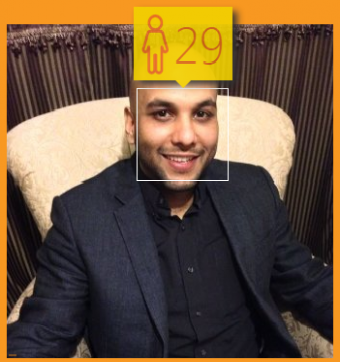
What does a 33-year-old look like? After using Microsoft’s free age-guessing tool, I was shocked to find out that looks can be deceiving. I recently ran the tool using a photo of myself in my mid-20’s, amidst an unhealthy phase in my life. The tool guessed age 30. So sad.

Then I ran the tool using a photo from last year when I was 32 years old and much more physically fit than I was in my 20’s. The tool guessed age 29. Less sad.

Microsoft’s fun little tool was on to something. My conclusion from this test was that you cannot accurately determine the rate at which a person ages, just by factoring in their basic bio-data.
You’ve got to look deeper than what a person’s obvious characteristics are telling you. Recently, scientists have also confirmed that birth age and biological ageing occur at very different rates.
Earlier this month, The BBC reported on a survey by the Proceedings of the National Academy of Sciences, which confirmed that people of the same biological age have vastly different physical and mental ages.
The survey followed a group of 954 people from the same town in New Zealand, born in 1972-73.
At the age of 26, 32 and 38 the scientists looked at 18 different ageing-related traits, including the integrity of their cardiovascular, metabolic, and immune systems, their kidneys, livers, gums, and lungs, and how their DNA had deteriorated, to see how they were ageing.
The results indicated that there was a huge difference in how people had aged. At the age of 38, some people’s biological age had barely changed and ranged since their late-20s.
However, others were not as fortunate, as their biological age was found to be nearly 60 years old.
Study members who had an older biological age had scored lower on tests of balance, strength, and motor coordination. These people also reported more physical limitations, had an elevated risk for stroke and dementia. As well, their IQ scores had fallen dramatically from when they were 26.
Thus, as two 38-year olds can have a biological age difference of 40-years, should they be paying similar life insurance rates? The rate of a life insurance premium is based on age, gender and smoking status. But, if people age so differently, is this enough to fairly gauge how likely a life insured is to die?
Life insurance companies use mortality tables, also known as life tables, to calculate when a person is most likely to die. Using these tables, they are able to get an idea about how much a person should pay, depending on how likely they are to die within the policy term.
Most insurance companies will also consider the insured’s medical assessment to get a sound estimate of their life expectancy. Most companies offer lower rates called ‘preferred’ or ‘preferred plus’ rates to those who have above average health.
On the flip side, those with below average health must pay higher premiums, sometimes up to 300% more than those with average health, or their application for life insurance may even be declined. The catch is, that as people age, insurance companies readjust premiums according to their morality tables, and will increase the rates a customer must pay every new term.
Carriers could use a more in-depth reward system for healthy applicants, rather than just the two broad categories of preferred and preferred plus. By including questions on their applications about the insured’s positive lifestyle choices and habits, insurers could get better idea of their client’s true life expectancy.
Further, insurance underwriters and actuaries could consider factors that slow down ageing, such as a healthy lifestyle, including good eating habits and regular exercise, as well as low-stress lifestyles and conservative spending habits- when renewing one’s life insurance policy, in order to get a more fair morality rate assessment.
As an alternative to renewing a term policy, policyholders will sometimes re-apply for a new policy and must get reassessed by completing medical tests again. The risk here is that if one’s health has taken a turn for the worse, one will face far higher premiums and may even be considered uninsurable. To prevent this, remember never to cancel an old policy until you have a new one in place first.
For all of you that are growing old, but young at heart- keep up a healthy lifestyle to stay biologically young, and hopefully one day you will be able to save yourself from paying much higher life insurance premiums.